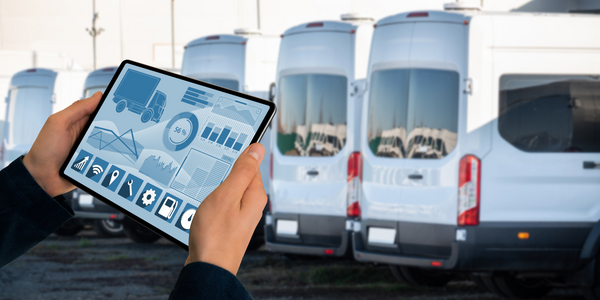Technology Category
- Functional Applications - Transportation Management Systems (TMS)
- Sensors - Level Sensors
Applicable Industries
- Specialty Vehicles
- Transportation
Applicable Functions
- Logistics & Transportation
- Product Research & Development
Use Cases
- Supply Chain Visibility
- Transportation Simulation
About The Customer
The Home Depot is a leading home improvement retailer in the United States. In 2017, the company announced a $1.2 billion investment in its supply chain, with a goal to construct approximately 150 new logistics facilities in the United States within three years. The company's focus on serving customers both in-store and online supported 80% digital sales growth in the third quarter of 2020, with 60% of those orders fulfilled at stores. Despite the challenges posed by the COVID-19 pandemic, The Home Depot managed to increase its comparable U.S. sales by 24.6% year-over-year in the third quarter. The company's supply chain operation has fostered a culture of innovation, encouraging experimentation and collaboration with freight tech startups, a commitment to sustainability, and new ways of partnering with carriers.
The Challenge
The Home Depot, a leading home improvement retailer, faced significant challenges during the COVID-19 pandemic. The company had to deal with the possibility of social distancing in warehouse and distribution facilities, and manage extraordinarily volatile demand. The nature of their freight, which includes bulky, heavy, and difficult-to-handle items such as appliances, lumber, light fixtures, and power tools, made loading and unloading time-consuming. This potentially delayed carriers and pushed detention costs higher. The company also had to manage the additional physical asset and matching problem in the yard due to their heavy reliance on drop trailers. The pandemic further complicated these issues, necessitating a quick response to lessen the impact on drivers and implement a flexible strategy for loading and unloading trucks.
The Solution
In response to these challenges, The Home Depot partnered with Convoy, a digital freight network, to implement a new transportation strategy. This strategy involved the use of Convoy's innovative solution, Convoy Go, which offered a gray trailer pool for drop trailer solutions. This was particularly beneficial as it did not require carriers to commit their trailers, a common requirement by most freight brokerages and non-asset transportation providers. This solution was especially useful for small carriers who lacked shipper relationships and extra trailer capacity. The new strategy helped carriers deal with difficult-to-handle freight and played a key role in keeping The Home Depot’s network fluid. This partnership was part of The Home Depot's broader commitment to supply chain innovation, which included a $1.2 billion investment in its supply chain infrastructure and a culture of technology experimentation.
Operational Impact
Quantitative Benefit

Case Study missing?
Start adding your own!
Register with your work email and create a new case study profile for your business.
Related Case Studies.

Case Study
Airport SCADA Systems Improve Service Levels
Modern airports are one of the busiest environments on Earth and rely on process automation equipment to ensure service operators achieve their KPIs. Increasingly airport SCADA systems are being used to control all aspects of the operation and associated facilities. This is because unplanned system downtime can cost dearly, both in terms of reduced revenues and the associated loss of customer satisfaction due to inevitable travel inconvenience and disruption.

Case Study
Transformation for IoT Business Model in Connected Industrial Vehicles
CNH Industrial wanted to put IoT-enabled viechles onto the market. Whether monitoring a single machine or integrating an entire fleet, operators are able to track the status, speed, and movement of machines and their performance and also receive alerts on issues that may require service by a qualified technician to improve uptime and overall effectiveness of the vehicle.

Case Study
IoT-based Fleet Intelligence Innovation
Speed to market is precious for DRVR, a rapidly growing start-up company. With a business model dependent on reliable mobile data, managers were spending their lives trying to negotiate data roaming deals with mobile network operators in different countries. And, even then, service quality was a constant concern.

Case Study
Digitize Railway with Deutsche Bahn
To reduce maintenance costs and delay-causing failures for Deutsche Bahn. They need manual measurements by a position measurement system based on custom-made MEMS sensor clusters, which allow autonomous and continuous monitoring with wireless data transmission and long battery. They were looking for data pre-processing solution in the sensor and machine learning algorithms in the cloud so as to detect critical wear.

Case Study
Cold Chain Transportation and Refrigerated Fleet Management System
1) Create a digital connected transportation solution to retrofit cold chain trailers with real-time tracking and controls. 2) Prevent multi-million dollar losses due to theft or spoilage. 3) Deliver a digital chain-of-custody solution for door to door load monitoring and security. 4) Provide a trusted multi-fleet solution in a single application with granular data and access controls.








